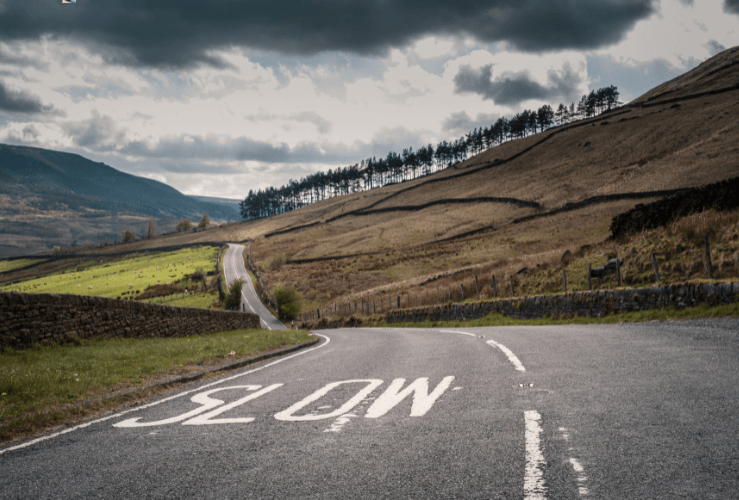
1. Keep your distance
It is not possible to crash into space, so make sure you surround yourself by as much of it as you can whilst on the road.
As well as controlling the distance from the car in front, you can actively manage the space behind you, too, by moving further forward if the rear car is too close.
Ensure there is a 2 second gap between you and the next vehicle.
2. Keep your speed down
Try to keep well below the speed limits, especially in built up areas.
Most fatalities happen in urban areas because there are more obstacles, and more people.
Hitting a child, a cyclist, or a motorcyclist even below the speed limit can be fatal.
3. Anticipate
Don’t just rely on seeing what’s immediately in front of you on the road, and what’s in your rear-view mirror. Anticipate problems further ahead by scanning the furthest distance you can see.
Look around you frequently and be fully aware of other road users.
4. Stick to the F.L.O.W.E.R. acronym
Keep fuel topped up, regularly check your lights, keep oil at the optimum level, keep water levels topped up, keep electrics like your battery and wipers well maintained, and look after your rubber: keep your tyres inflated to the manufacturer’s recommended pressure.
Adhering to these tips will reduce the need of calling upon your annual breakdown cover during the year.
5. More signs and paint = more danger
In general, the more investment in the area of road you are in, the greater the danger.
If there is a lot of paint, many signs and additional street lamps, the stretch of road could be significantly more dangerous than others.
6. Don’t get distracted
Driving is a complex task, so don’t make it harder by using a mobile phone, adjusting your satnav, or playing loud music.
The law requires drivers to keep full control of their vehicles at all times, so don’t get caught out.
7. Ensure other drivers can see you
Don’t drive in the blind spots of vans or trucks, but instead remain as visible as possible.
Pedestrians, cyclists and motorcyclists are the most common victims of such driving.
8. Park safely
Try to park away from areas of activity, and reverse into a space rather than driving in front first. This is easier because you are reversing into a space you can see, rather than out into the moving traffic when you leave.
Generally, avoid reversing, as it affords less visibility and more risk.
9. Should you be on the road?
Driving whilst tired can be very risky, especially if you nod off at 70mph.
Take regular breaks (15 minutes every two hours), and consider avoiding driving at all if you are too tired.
Never drive whilst under the influence of alcohol.
10. Stick to the C.O.A.S.T acronym
- Concentration – don’t become distracted.
- Observation – be aware of your fellow drivers.
- Anticipation – anticipate what other road users are going to do – good and bad.
- Space – keep your distance and don’t forget the two second rule.
- Time – plan journeys properly, so you don’t end up speeding towards your destination in order to arrive on time.
Get your breakdown cover quote from Start Rescue today.




